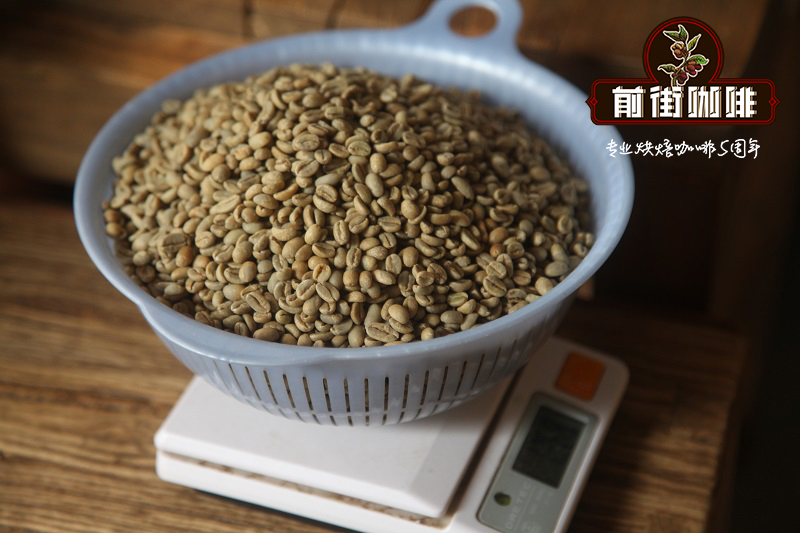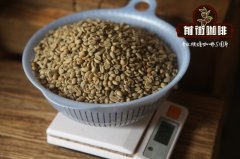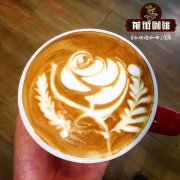Wet planing with unique regional flavor | wahana estate style of Vahana Manor, Sumatra Coffee

Professional coffee knowledge exchange More coffee bean information Please pay attention to coffee workshop (Weixin Official Accounts cafe_style)
Wet planing method with unique regional flavor| Sumatra coffee wahana estate wahana estate flavor and taste?
This small batch of Sumatra Longberry comes from Wahana Estate and, as the name suggests, is a long, thin bean-shaped variety. It is said to have originated in Ethiopia due to its similarity to the variety named Longberry Harrar. Wahana Estate became one of its experimental varieties by bringing this variety to the Toba Lake region of Sumatra. The coffee is thoroughly washed and dried.
Wahana Estate was founded in 2005 and is the only large private coffee estate on Sumatra. It is located in Lae Mungkur village in northern Sumatra. Wahana Graha Makmur translates to "great success for boats" and the mission of the property is not only to produce its own high quality coffee, but also to improve the quality of coffee farmers throughout the region by advising neighbouring farms and farm management. The estate covers an area of about 250 hectares and is planted with 13 different coffee varieties, each carefully segmented to produce unique single varieties of coffee, including some local Indonesian hybrids such as Longberry and Rasuna.
Sumatra's unique wet hulling process
Most of the Sumatra we provided for this report were treated wet using a method particularly relevant to Sumatra, known as "wet tugboat" or giling basah in the local Batak language. Traditional wet processing involves removing the skins and soft pulp of coffee fruits from the beans by fermentation and washing (traditional methods) or by machine scrubbing, in either case wrapping the beans only in their inner parchment and silver skin. Dry it to about 12.5% moisture. Coffee is stored in "parchment," a dry, fragile parchment skin that is only removed from the beans when ready for shipment. However, in wet dehulling, when the beans still have a high moisture content (usually up to 40%) during drying, the parchment skin is removed during drying. Although this slight difference between traditional wet processing and wet shelling may seem trivial, it seems to result in significant differences in cup character,
The property is a significant employer locally-with 800 to 1000 workers whose families have access to on-site health clinics. Free housing, electricity, drinking water, health care (including free medicines) and kindergartens and kindergartens are provided to workers. The estate also built a church and a small mosque on the farm.
It's very unusual to find coffee like this, experimental varieties, but the results are of good quality. This is undoubtedly expensive for coffee from Sumatra, but we think you'll be pleased with the results.
Features: Very clean, especially Sumatra origin with aromatic chocolate flavor. Sweet orange and caramel. The glass is very earthy and smooth, with subtle exotic fruit flavours like guava, with both texture and flavor.
Harvest: Depending on region throughout the year, peaks from March to June.
Arabica introduced: Java was introduced by the Dutch in the mid-17th century.
Specialty coffee regions: Sumatra (Aceh), Java, Timor, Sulawesi (formerly Celebes), Bali.
Important Notice :
前街咖啡 FrontStreet Coffee has moved to new addredd:
FrontStreet Coffee Address: 315,Donghua East Road,GuangZhou
Tel:020 38364473
- Prev

Longberry microlot Variety Flavor | Wahana Rasuna e of Vahana Manor in Sumatra
Professional coffee knowledge exchange more coffee bean information please follow the coffee workshop (Wechat official account cafe_style) Longberry microlot varieties | Sumatra Wahanna Manor Wahana Rasuna estate sun bean planting story? Sumatra Wahana Rasuna Natural Process is located in Lae in SidIkalang District, Dairi District, North Sumatra Province.
- Next

What is Indian coffee? The reason for the story of Indian monsoon Malaba coffee
Professional Coffee knowledge Exchange more information about coffee beans Please follow the story of Coffee Workshop (official Wechat account cafe_style) dating back to the 19th century, when India was still a British colony. Coffee produced from India is shipped to England. Before the opening of the Suez Canal, it was necessary to make a detour from India to Britain through the Cape of good Hope at the southern tip of Africa, across the Indian Ocean and Great Britain.
Related
- Detailed explanation of Jadeite planting Land in Panamanian Jadeite Manor introduction to the grading system of Jadeite competitive bidding, Red bid, Green bid and Rose Summer
- Story of Coffee planting in Brenka region of Costa Rica Stonehenge Manor anaerobic heavy honey treatment of flavor mouth
- What's on the barrel of Blue Mountain Coffee beans?
- Can American coffee also pull flowers? How to use hot American style to pull out a good-looking pattern?
- Can you make a cold extract with coffee beans? What is the right proportion for cold-extracted coffee formula?
- Indonesian PWN Gold Mandrine Coffee Origin Features Flavor How to Chong? Mandolin coffee is American.
- A brief introduction to the flavor characteristics of Brazilian yellow bourbon coffee beans
- What is the effect of different water quality on the flavor of cold-extracted coffee? What kind of water is best for brewing coffee?
- Why do you think of Rose Summer whenever you mention Panamanian coffee?
- Introduction to the characteristics of authentic blue mountain coffee bean producing areas? What is the CIB Coffee Authority in Jamaica?

